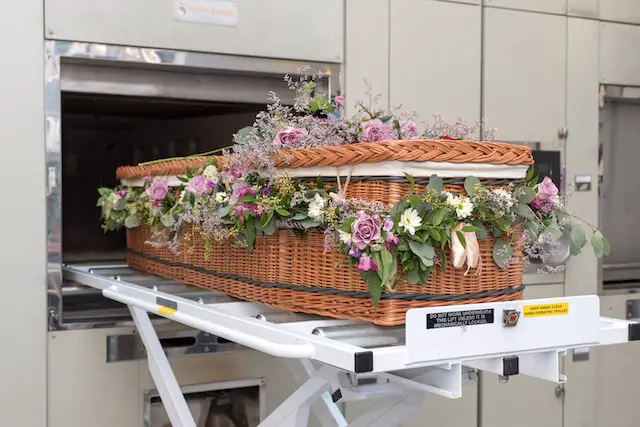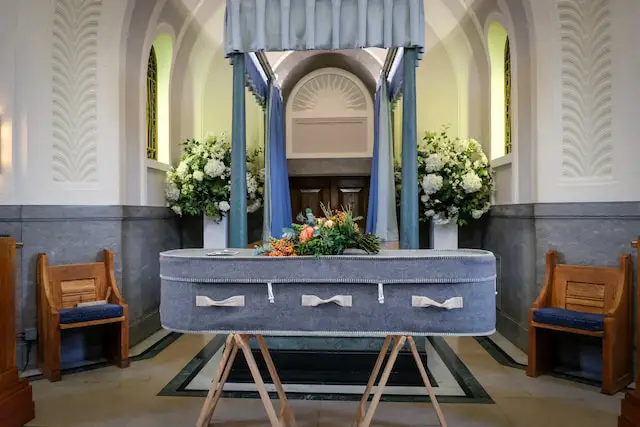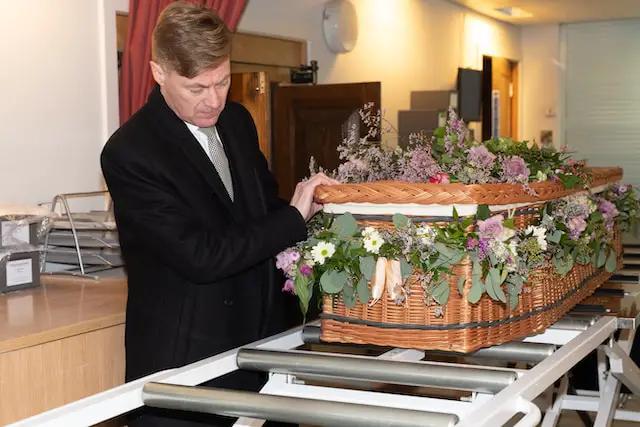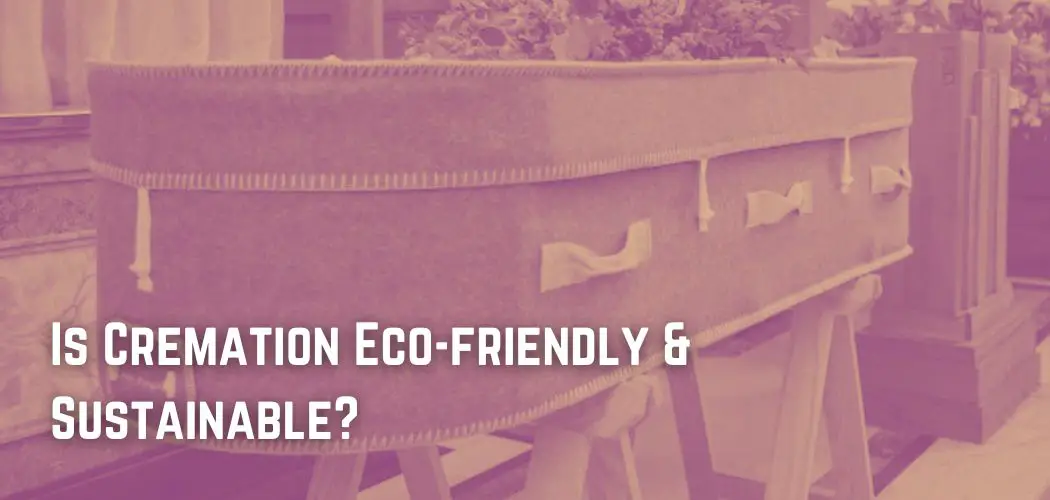Cremation is becoming an increasingly popular option for those who are looking for a slightly more eco-friendly way to say goodbye to a loved one. But what does cremation actually involve, and how environmentally friendly is it?
In this blog post, we will answer these questions and more. We will also discuss the different options available for those who want to choose an eco-friendly cremation.
How is a Body Cremated?
Cremation is the process of incinerating a body using high temperatures. The resulting ashes can either be scattered, buried, or stored in an urn.

When a body is cremated, it is placed in a casket or container and then burned in a furnace. The heat from the fire breaks down the body into ashes, which are then collected and placed in an urn.
The environmental impact of cremation depends on a few factors, including the type of fuel used to power the furnace, the type of casket or container used, and how efficiently the ashes are disposed of.
How Eco-friendly is Cremation?
Cremation is not entirely environmentally friendly, but it is still more sustainable than leaving a body to decompose in a coffin buried underground.
The incineration process emits toxins such as mercury, soot, carbon monoxide and carbon dioxide, and nitrogen oxide into the air.
These toxins can cause serious health problems such as respiratory disease, cancer, and heart disease, particularly for those who live near crematories.
Cremation also requires a lot of energy to power the furnace, which uses up a lot of valuable resources and may lead to the depletion of these resources.
However, some crematories are powered by renewable energy sources such as solar power, which offsets the impact of the cremation process.
The type of casket or container used also impacts the eco-friendliness of cremation.
Traditional wooden caskets are not eco-friendly, as they are made from trees and lead to deforestation. Metal caskets are slightly better, as they can be recycled, but they still require a lot of energy to produce.
The most eco-friendly option is to use a biodegradable casket or container, such as one made from bamboo or wicker. These materials will break down over time, making them much more environmentally friendly than traditional options.
Toxins from cremation
There are also concerns about the impact of cremated ashes on the environment. When ashes are scattered or buried, they can leach harmful chemicals into the soil and water supply.
Why is Cremation Better than Traditional Burial?
Although cremation isn’t eco-friendly, the process still uses less energy than traditional burial methods, such as embalming and coffin construction.
Embalming, which involves the use of formaldehyde to preserve a body, is particularly harmful to the environment. It requires large amounts of water and energy, and the toxic chemicals used in the process can contaminate groundwater supplies.
Coffin construction also uses valuable resources such as wood and metal, which can be recycled but require a lot of energy to produce.

Cremation is also a more space-efficient option than burial. A traditional burial plot can take up a large amount of land, whereas cremated ashes can be scattered or stored in an urn, which takes up much less space.
Additionally, a body takes a long time to decompose in a coffin underground. This can release methane, a greenhouse gas that contributes to climate change. Cremation is a much faster process and does not release methane into the atmosphere.
Options for Eco-Friendly Cremations
There are a few things to consider if you are interested in choosing cremation for yourself or a loved one.
First, you will need to decide what to do with the ashes afterward.
The best option is to scatter the ashes somewhere that they will be naturally absorbed, such as in a body of water or on land that is already home to plants and trees. This ensures that the ashes won’t end up in landfills.

You can offset the environmental impact of cremation by choosing an urn that is biodegradable and is made from recycled materials.
There are a number of urns available on the market that are made from sustainable materials such as bamboo and glass.
If you are interested in a more eco-friendly cremation, there are a few different options available.
One option is to choose a “green” funeral home that uses alternative energy sources, such as solar power, to operate its crematorium.
You can also look for a funeral home that offers water cremation. This process uses significantly less energy than traditional cremation and doesn’t produce emissions.
Water cremation is not yet available in all states, but it is an option to consider if it is available where you live.
Cremation may not be eco-friendly, but there are still a few ways to reduce its impact on the environment. By considering your options carefully, you can make sure that your loved one’s final sendoff is respectful to both them and the planet.





